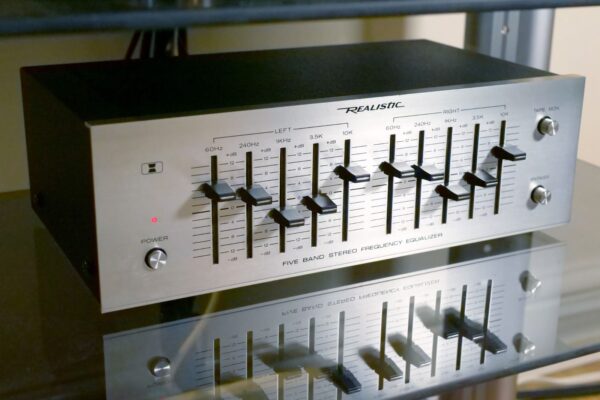Tuning your bass guitar is more than just ensuring each string is at the right pitch. It’s about unlocking the true power and potential of your instrument. From the impact it has on your sound to its overall playability, you’ll discover why tuning is the foundation upon which your musical journey is built.
But why is tuning so important? Imagine the frustration of playing out-of-tune notes that clash with the rest of the band. Or the feeling of limitation when your bass guitar fails to produce the desired tone. By mastering the art of tuning, you’ll unlock a world of possibilities. Your bass lines will groove with precision, your notes will resonate harmoniously, and your sound will reach new heights.
As you absorb the knowledge and techniques shared in this guide, a desire will ignite within you. The desire to create music that is in perfect harmony, to experience the joy of playing a bass guitar that is precisely tuned, and to captivate your audience with a sound that resonates deep within their souls.

Equip yourself with the knowledge and tools shared in this guide, and let your bass guitar sing with clarity and precision. Get ready to tune each string with confidence, fine-tune your instrument to perfection, and experience the transformative power of being in tune. So let’s start with the best bass guitar tuning guide for beginners.
1. Understanding Bass Guitar Tuning
To begin our exploration of bass guitar tuning, let’s first understand the standard tuning for a 4-string bass guitar.
The standard tuning is typically EADG, with each letter representing the pitch of the corresponding string.
The low E string (4th string) produces the deepest and lowest note, while the G string (1st string) produces the highest and thinnest note. This standard tuning provides a balanced and versatile foundation for most musical styles.
a. Alternative Tuning Methods
However, it’s important to note that alternative tunings exist for bass guitars, depending on specific musical preferences and genres.
Some bassists may choose to tune down their strings to achieve a heavier and deeper sound, while others may explore alternate tunings for unique tonal possibilities.
Understanding these alternate tunings and their applications can open up a whole new world of sonic exploration.
Read More: 5 Songs Good for Bass you Must Try
2. Tuning Methods and Tools
Now that we understand the importance of bass guitar tuning, let’s explore the various methods and tools available to help you achieve accurate tuning.
One popular method is using an electronic tuner, which detects the pitch of each string and displays it visually.
Electronic tuners are easy to use and provide precise tuning guidance. They come in various forms, including clip-on tuners, pedal tuners, and smartphone apps.
Utilizing an electronic tuner is an efficient and reliable way to ensure your bass guitar is tuned accurately.
a. Tuning by Ear
Another method for tuning a bass guitar is by ear. This method involves using a reference pitch, such as a piano or tuning fork, to tune each string manually.
While it requires some practice and a good musical ear, tuning by ear allows you to develop your sense of pitch and can be particularly useful in situations where an electronic tuner is not available.
b. Tuning by App
In addition to electronic tuners and tuning by ear, there are several smartphone apps and online resources specifically designed to assist with bass guitar tuning.
These apps, often regarded as the best bass guitar tuner apps, provide visual displays of pitch and often include additional features like metronomes and chord libraries. They are convenient tools that can be accessed on the go, making tuning your bass guitar a breeze.
Read More: Best Equalizer Settings for Music, Movies and More
3. Tuning Techniques for 4-String Bass Guitars
Now that we’ve covered the methods and tools in our quest for the Best Bass Guitar Tuning Guide for Beginners, let’s dive into the practical techniques for tuning each string of a 4-string bass guitar. We’ll go step by step through the process, ensuring that you achieve accurate tuning and maintain proper string tension.
Starting with the E (4th) for bass tuning 4 string, you’ll need to adjust the string tension by turning the tuning peg until it matches the desired pitch. It’s crucial to listen carefully and make small adjustments to avoid overtightening or loosening the string.
Moving on to the A (3rd) string, the same principles apply. Adjust the tension until the pitch matches the desired note for bass tuning 4 string. Remember to take your time and fine-tune the string gradually.
Next, we’ll tune the D (2nd) string. Again, listen closely to the pitch and make precise adjustments to achieve the desired note for bass tuning 4 string. Patience and attentiveness are keys to achieving accurate tuning.
Finally, we’ll tune the G (1st) string for bass tuning on the 4th string. Follow the same process as before, ensuring that the string tension matches the desired pitch. Pay attention to the overall balance of the bass guitar’s sound as you fine-tune each string.
Throughout the tuning process, it’s essential to make small adjustments and regularly check the pitch to achieve accurate tuning for bass tuning 4 string. Remember, practice makes perfect, and with time, you’ll become more proficient in tuning your bass guitar
Read More: 2 Ohm vs 4 Ohm Speakers
4. Tuning Techniques for Extended-Range Bass Guitars
If you’re playing an extended-range bass guitar, such as a 5-string or 6-string instrument, tuning techniques can vary slightly. These additional strings offer a wider tonal range and require specific tuning considerations.
a. Tuning a 5-string Guitar
For a 5-string bass guitar, the extra string is typically a low B string. So When bass tuning 5-string, it’s important to ensure that the tension and pitch of the B string are balanced with the other strings. You can use an electronic tuner or reference pitch to achieve accurate tuning, following the same principles as tuning a 4-string bass guitar.
This ensures that the instrument produces a harmonious and well-balanced sound across all strings. Remember, for bass tuning 5-string, practice, and patience are key to achieving optimal tuning results. So, whether you’re a seasoned player or just starting out, mastering bass tuning 5-string instrument is an essential skill.
b. Tuning a 6-string Guitar
In the case of a 6-string bass guitar, the additional strings are usually a high C string and a low B string.
Tuning these strings requires precision and careful attention to achieve the desired pitch and maintain proper string tension.
As with tuning a 5-string bass guitar, use an electronic tuner or reference pitch to guide you through the tuning process.
Whether you’re playing a 4-string, 5-string, or 6-string bass guitar, it’s crucial to maintain proper string tension and intonation for optimal playability and sound quality.
Read More: 2 Way vs 3 Way Speakers
5. Tips for Maintaining Tuning Stability
To ensure your bass guitar stays in tune for extended periods, there are several tips and techniques to keep in mind. These practices will help you maintain tuning stability and prolong the lifespan of your strings.
Proper string winding techniques play a significant role in tuning stability. When changing strings, make sure to wind them neatly and securely around the tuning pegs. This prevents slippage and ensures a stable connection between the string and the peg.
a. Temperature and Environment
Extreme temperature and humidity conditions can affect the tuning stability of your bass guitar. Avoid exposing your instrument to drastic changes in temperature and humidity, as they can cause the wood and strings to expand or contract.
Store your bass guitar in a controlled environment and avoid leaving it in extreme conditions, such as a hot car or a damp basement.
b. String Conditions
Regular string changes are crucial for maintaining tuning stability. Over time, strings lose their elasticity and tonal quality, which can affect the overall tuning.
As a general guideline, consider changing your strings every three to six months, depending on your playing frequency and personal preference.
c. Proper Bridge and Saddle Heights
Additionally, ensuring proper bridge and saddle heights is essential for maintaining intonation and tuning accuracy.
Regularly check the setup of your bass guitar, or consult with a professional guitar technician, to ensure that the bridge and saddles are correctly adjusted. This will contribute to improved tuning stability and overall playability.
By implementing these tips, you can enhance the tuning stability of your bass guitar and enjoy consistent and reliable performance.
Read More: Best Budget Microphone for Podcasting
6. Troubleshooting Common Tuning Issues
Even with the best practices in place, you may encounter common tuning problems with your bass guitar. Understanding these issues and knowing how to troubleshoot them can save you time and frustration.
a. String Slippage
One common issue is string slippage, where the string loses tension and detunes itself. To address this, make sure the strings are wound properly around the tuning pegs and have a secure grip. If slippage persists, you may consider using locking tuners or adding a string tree to enhance stability.
b. Intonation Issues
Intonation issues can also affect tuning accuracy. It refers to the relative pitch accuracy of each note along the length of the fretboard.
If your bass guitar is experiencing intonation problems, consult a professional guitar technician who can adjust the saddles and bridge to ensure accurate intonation across all frets.
c. Keeping the Guitar New
Hardware that is outdated or damaged can occasionally cause tuning instability. Check the integrity of your tuning pegs, bridge, and nut to ensure they are functioning properly. If necessary, replace any worn or faulty components to restore tuning stability.
Remember, patience and persistence are key when troubleshooting tuning issues. It may take some time and experimentation to identify and address the root cause of the problem. If you’re unsure or struggling to resolve the issue on your own, seek advice from a knowledgeable guitar technician who can provide expert guidance.
Read More: Baby Headphones for Airplane
7. Alternate Tunings for Creative Exploration
While standard tuning is widely used, exploring alternate tunings can open up exciting avenues for creative expression on the bass guitar.
Many bassists experiment with alternate tunings to achieve different tonalities, expand their sonic palette, or adapt to specific musical genres.
a. Useful Alternate Tuning Methods
Drop tunings, such as Drop D (DADG) or Drop C (CGCF), lower the pitch of the strings, adding depth and heaviness to your bass lines.
Open tunings, like Open G (GBDGBD) or Open D (DADF#AD), provide unique chord voicings and open-string possibilities.
These alternate tunings can add a whole new dimension to your bass playing, enabling you to create fresh sounds and explore unconventional musical territories.
Before experimenting with alternate tunings, it’s important to understand the specific tunings and how they will affect your playing.
Take the time to familiarize yourself with the string relationships and note patterns within each alternate tuning. This knowledge will empower you to unlock new possibilities and develop a unique playing style.
8. Essential Tuning Accessories
To further optimize your tuning experience, consider investing in high-quality accessories. Here are some top recommendations:
a. Best Bass Tuner Clip-On
If you want the best bass tuner clip-on, then consider the Snark SN-5X Clip-On Tuner and the D’Addario NS Micro Clip-On Tuner, both regarded as top-notch and the best bass tuner clip-on. They feature compact and user-friendly designs coupled with bright and multi-colored displays, ensuring easy and accurate tuning.
b. Best Pedal Tuner for Bass Guitar
For the best pedal tuner for bass guitar, the Boss TU-3 Chromatic Tuner Pedal stands out. It’s known for its durability and reliability, featuring a large LED display. Additionally, it supports both guitar and bass tuning, making it a versatile choice. Consider the Boss TU-3 as your go-to best pedal tuner for bass guitar.
c. Best Bass Machine Heads
When it comes to the best bass machine heads, the Hipshot Ultralite Bass Tuning Machines are a top choice. These tuning machines are known for being lightweight and precision-engineered. What sets them apart as the best bass machine heads is their impressive 20:1 gear ratio, allowing for highly accurate tuning adjustments.
Conclusion
Tuning your bass guitar is a fundamental aspect of playing and creating music. By following the techniques and tips outlined in this guide, you’ll be able to achieve accurate tuning, maintain stability, and explore the vast potential of different tunings.
Remember, tuning is not just about hitting the right notes but also about unlocking the true potential of your instrument. Embrace the journey of discovery, experiment with different tunings, and let your bass guitar resonate with the sounds that inspire you. We are sure this Best Bass Guitar Tuning Guide for Beginners has answered all your questions.
Enjoy the process, and may your tuned bass guitar take your musical expression to new heights.
Frequently Asked Questions about Tuning Guitars
Q: What is the tuning for a beginner bass?
A: For a beginner bass player, it’s recommended to start with standard tuning, which is E-A-D-G. This is the most common and widely used tuning for a 4-string bass guitar. As you progress and explore different styles of music, you may encounter alternate tunings, but standard tuning provides a solid foundation for learning and playing a wide range of songs.
Q: What frequency should I tune my bass guitar?
A: Standard tuning for a 4-string bass guitar is E-A-D-G, with the frequencies of the open strings being approximately 41.2 Hz, 55 Hz, 73.4 Hz, and 98 Hz respectively. These frequencies correspond to the fundamental tones of each string when they are played without any fretting.
Q: What is the best 5 string bass for beginners?
A: The Yamaha TRBX305 is often recommended as one of the best 5-string bass guitars for beginners. It offers a comfortable playing experience, versatile tone options, and solid build quality at an accessible price point. Other good options include the Ibanez GSR205 and the Squier Affinity Series Jazz Bass V.
Q: what are best bass guitar tuner app?
A: Some of the best bass guitar tuner apps include: Fender Tune, BOSS Tuner, GuitarTuna. These apps offer accurate tuning, user-friendly interfaces, and additional features like metronomes and chord libraries and are considered the best bass guitar app.








5 thoughts on “Best Bass Guitar Tuning Guide for Beginners [2024]”